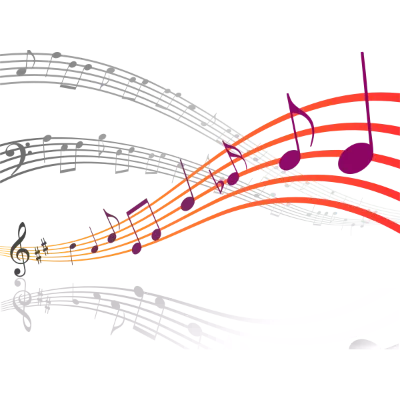What Distinguishes Music from Noise?

The kids nearby are tapping their fingers. Is it just irritating noise or musical sound? What distinguishes music from noise? Actually, it is a matter of how the listener sees it.
The best indicator of whether an individual will interpret a sound as noise or music is their age. Human hearing deteriorates over time, so it becomes hard to hear “conversational” sound frequencies as one gets older. Conversations are considered the mid-range of human hearing, meaning they can’t be super high and not super low, so that it blends in with other sounds.
What is Music?

Graphic by CreativeCommons
According to physics, sound is a vibration that spreads like a wave through a transmission environment – solid, liquid, and gas. Psychology defines sound as the process of receiving waves from the ear to be sent to the brain, which recognizes it as sound.
So, music is the art of arranging and combining sounds to create a harmonious melody. Music is a form of art with sound as its medium. A musical note is a combination of pitch and duration.
What is Noise?

Graphic by CreativeCommons
The general definition of noise is unwanted sound. Noise is a sound but it is considered a “disturbance” or a “distraction”. There are two types of noise, physiological and psychological. Physiological hazards (high decibel sounds) may cause hearing loss. The psychological aspect of noise (like the bustling sound of city life) may cause stress or mental problems.
What Distinguishes Music from Noise?
From the definitions, sound and noise are almost the same. Noise is actually a type of sound, but noise is more about perspective. Some sounds can be noise to one person while another person doesn’t define them as noise. It’s a matter of perspective.
For example, your teenage son likes high-sound rock or hip-hop music, while you think it’s noise. Most of the time, the difference between music and noise is disturbance and perspective.
Music is present in all cultures. It has a wide array of genres and is composed of different elements like pitch, rhythm, timbre, texture, and dynamics. Different voices and instruments create a wide variety of frequency combinations of sound and music. When these frequencies are unharmonious, the sound produced is not music but just noise.
Music has a pleasing (sometimes, soothing) effect on the listener, while noise is unpleasant because of the irregular waveform, sudden changes in wavelength, and low frequency. With music, there is a specific pattern in which sounds are used to create a rhythm. With noise there is no pattern, it is usually loud and meaningless. Noise is lacking in the organized structure of sound.
Music is used for different reasons. It is used for someone’s enjoyment. It elevates a movie or a television show. It is a source of happiness for some people. A religious ceremony is incomplete without music.
Even unnecessary chattering or any sound that may disrupt an individual’s relaxation experience or enjoyment of a peaceful environment is still considered noise to the affected individual. Noise can come from the sounds of an approaching train, a piece of broken machinery, someone shouting or screaming, your husband snoring, or the background noise (too many voices) in a crowded room. Sometimes, noise is deliberately used to distract the listener.
Very loud noise causes damage to the ears – as big as an explosion or as simple as the sound of music playing from your headphones. Young people today are used to listening to loud sounds or music, and sometimes you could hear them loudly from their earphones. This can damage the eardrums and is highly discouraged.
But noise can be creatively used in music. Noise is actually being used in music production as background effects or percussion. Credit to this change, you’ll find albums that were made to create interesting textures with the use of noise. For instance, many synthesizers include different layers of noise to make their sounds more “organic” and real to the listener and less “digital”.
Conclusion
Music is essentially an organized sound, noise, on the other hand, is the opposite. In music, there is a pattern that creates melody, rhythm, and harmony. Music progresses towards a climax to highlight parts of a song.
With noise there are no rules, there are no patterns, it is just a meaningless sound.
Parents, Teachers & Sheet Music Seekers:
If I offered to provide you hundreds of legit sheet music PDFs for your kids:
- Brand-New & Exclusive Compositions
- Age & Level Appropriate
- With INSTANT Online Access
- Worry-FREE Licensing & Copyright
...would you take me up on that offer?
ABOUT
I started Music4Kids with a simple goal in mind: To provide valuable information to guiding parents who want to raise musically inclined kids.
Click to read on